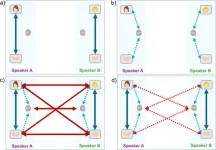This new method, presented today at the European Academy of Dermatology and Venereology (EADV) Congress 2024, uses tumour-specific profiling to detect antibodies unique to stage I and II melanoma patients.
Melanoma, a skin cancer with a high mutation rate,2 produces immunogenic markers that trigger an immune response, resulting in the production of antibodies against cancer-testis antigens (CTAgs).3 These CTAgs lead to the production of specific antibodies that can act as early diagnostic and prognostic markers for melanoma.
In this study, a cancer array was used to analyse and compare blood samples from 199 patients with stage I and II melanoma and 38 healthy donors recruited through Lifeblood. Blood samples were collected at initial diagnosis and within 30 days of curative-intent surgery.
Specific IgG antibodies against three tumour antigens were identified as promising diagnostic biomarkers for early-stage melanomas, with area under the curve (AUC) values ranging from 0.857 to 0.981 in the discovery cohort and from 0.824 to 0.985 in the internal validation cohort.
Of the three identified markers, one showed an AUC value of 0.9805 in the discovery cohort,* with 98% sensitivity and 76% specificity, and 0.9846 in the validation cohort, with 99% sensitivity and 82% specificity.
“These results indicate that 99% of melanoma patients in the validation cohort were positive for this marker, while 82% of healthy individuals were correctly identified as negative using the recommended threshold,” explains Dr Cristina Vico-Alonso, lead researcher from the Victorian Melanoma Service, Melbourne, Australia. “While 18% of healthy individuals were incorrectly identified as positive for this marker, combining it with the other two markers into a multiparameter signature does, however, help improve accuracy.”.
Based on the validation data, only 1% of melanoma patients would have a negative test for this top marker, suggesting that a negative result is highly indicative of the absence of melanoma.
“It is important to note, though, that this cohort included healthy individuals with no prior or current cancers and excluded individuals at high risk of developing melanoma,” says Dr Vico-Alonso. “Further testing in a real-world cohort is necessary to determine if these findings hold true when confounding factors, such as comorbidities, are considered." Data from a second, external validation cohort – to be presented at the congress – may add further insights on this.
“One significant advantage of this cancer array is its tumour-agnostic nature,” Dr. Vico-Alonso adds. “CTAgs are expressed in many solid tumours, making the diagnostic signature identified here applicable beyond melanoma. However, the specific cognate antigen combination remains unique to melanoma compared to other solid tumours.”
"We are currently using the cancer array to identify candidates for a pan-cancer diagnostic test, initially focusing on melanoma, lung, bowel and pancreatic cancers," Dr. Vico-Alonso shares. "In previous research, we identified a unique signature of antigens in advanced melanoma patients associated with more aggressive disease or metastases. Recently, we also identified another distinct antigen signature that differentiates between stage III melanoma patients who experienced recurrence and those who did not."
The early detection of melanoma remains a pressing challenge in oncology, with this research representing a significant step forward, offering hope for more effective, non-invasive diagnostic tools. Critically, early detection can lead to earlier surgical and therapeutic interventions, reducing the number of patients presenting with advanced disease and improving outcomes.4
Dr Vico-Alonso concludes, “This method of early detection could be integrated into current melanoma screening practices to provide additional information, especially in uncertain cases, potentially avoiding unnecessary procedures.”
END
Note to editors:
A reference to the EADV Congress 2024 must be included in all coverage and/or articles associated with this study.
For more information or to arrange an expert interview, please contact press@eadv.org.
Key terms defined:
* The discovery cohort is used to find promising biomarkers, while the internal validation cohort is used to confirm that these biomarkers are valid and reliable in a different group of subjects.
About the study author:
Cristina Vico-Alonso MD is a MIR [Médico Interno Residente]-certified dermatologist currently collaborating with the Victorian Melanoma Service (The Alfred Hospital) and Monash University in Melbourne, Australia.
About EADV:
Founded in 1987, EADV is a non-profit organisation with a vision to form a premier European Dermatology-Venereology Society. The Academy counts over 11,000 members from all around the globe, providing a valuable service for every type of dermatologist-venereologist professional. The EADV is dedicated to advancing patient care, education and research by providing a unique platform to bring people together and share ideas.
This year, the EADV Congress will take place in Amsterdam, The Netherlands, and online from 25-28 September 2024. Find out more: https://eadv.org/congress/
References:
Vico-Alonso, C., Mar, V., Sashindanath, M., & Da Gama Duarte, J. (2024). Early detection of melanomas using circulating tumour-specific antibodies. Presented at the European Academy of Dermatology and Venereology (EADV) Congress 2024.
Heistein, J. B., Acharya, U., & Mukkamalla, S. K. R. (2024). Malignant melanoma. In StatPearls. Treasure Island, FL: StatPearls Publishing. Retrieved from https://www.ncbi.nlm.nih.gov/books/NBK470409/
Õunap, K., Kurg, K., Võsa, L., Maiväli, Ü., Teras, M., Planken, A., Ustav, M., & Kurg, R. (2018). Antibody response against cancer-testis antigens MAGEA4 and MAGEA10 in patients with melanoma. Oncology Letters, 16(1), 211–218. https://doi.org/10.3892/ol.2018.8684
Davis, L. E., Shalin, S. C., & Tackett, A. J. (2019). Current state of melanoma diagnosis and treatment. Cancer biology & therapy, 20(11), 1366–1379. https://doi.org/10.1080/15384047.2019.1640032 END


